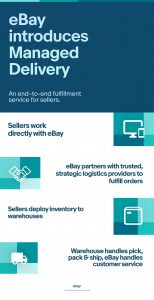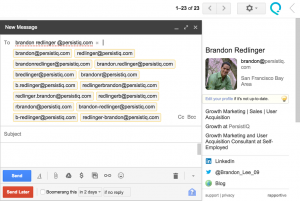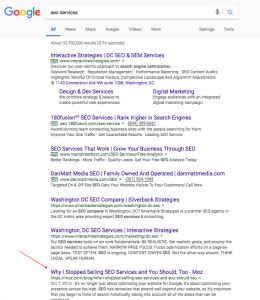Columnist Peter Isaacson explains how AI technologies and intent-level data are helping B2B marketers better understand their prospects and customers to stay ahead of the competition.

Several years ago, “Big Data” became one of the hottest trends in marketing. Everyone had to harness it, use it and somehow profit from it.
But quickly, B2B marketers realized that Big Data wasn’t an end in itself, but a means to accomplishing things. Flash forward to 2017: Harnessing the power of massive amounts of data still has a ton of promise, but the actual results just haven’t been there.
The truth is, most marketers haven’t been able to capitalize on its promise. In fact, 74 percent of firms say they want to be “data-driven,” but only 29 percent say they’re good at connecting analytics to action, according to research from Forrester.
While marketers want to use data to drive decisions and understand their audiences, they’ve been so bogged down by the sheer volume of information available that it’s become nearly impossible to separate the valuable signals from all the noise. Marketers are notorious for hoarding this data in spreadsheets and closed systems and filing it away without taking any action.
Fortunately, with new artificial intelligence (AI) technologies, there’s a way to turn all of this data into real, valuable insights to get a clear picture into the real intent of our audiences.
Here are just three ways this improved technology will change the way B2B marketers interact with prospects and customers.
1. Insight into the first sign of intent
Until recently, a large portion of the buyer’s journey has been invisible to B2B marketers. While we’ve had a view into what our prospects do when they come to our websites, we haven’t had much insight into their behavior outside of them.
Data from Google shows that B2B buyers conduct an average of 12 searches before they visit a company’s website. Unfortunately, this means that a majority of a buyer’s research — and as a result, their decision-making process — happens well before they even visit a company’s site.
To get a leg up on the competition, marketers need the ability to influence these buyers at the very beginning, from the first sign of interest. B2B marketers can now leverage AI-powered intent data to identify and influence these buyers, whether they’re looking up a relevant topic, researching the space, learning more about a competitor or talking about the industry.
What makes this really exciting is that marketers can now understand which prospects are interested in their products and services (almost before they do) and build messages to influence them early in the buying cycle.
2. A precise, accurate view into our audiences
Much of the data marketers have had access to in the past hasn’t been useful or precise. We’ve always had to trade off between (a) being early in the buying cycle with limited data; or (b) being late in the buying cycle with a wealth of insights. As a result, much of our marketing efforts have been reactive — responding to demo requests or advertising to companies who’ve visited our website.
To be successful marketers, we need to be proactive and reach buyers early on with relevant, engaging messages. The next generation of AI-powered intent data is key to making this a reality and gives marketers the ability to get precise, accurate information at the very beginning of the buyer’s cycle.
With this information, marketers can go beyond website data and understand B2B buyer behavior across the entire internet.
3. The ability to automate actions
While intent data has been around for a long time, the reason we haven’t been able to act on it is that it’s always been delivered to us in the wrong ways — in spreadsheets and bulky systems that require logins.
As marketers, we don’t just need an abundance of insights; we need the ability to turn them into actions, and more importantly, we need to be able to automate those actions.
With AI technology, marketers can now build intent audiences and deliver those automated actions, whether it’s triggering advertising campaigns and website personalization or informing sales activity and content programs.
For example, if you know a certain company or individual is researching a relevant keyword, you can automatically trigger an advertising campaign that’s focused around that specific topic. This type of automation means marketers can stay one step ahead of their competition and start those relevant conversations early in the buying cycle.
Conclusion
The advent of AI technologies and intent-level data gives B2B marketers the ability to become data-driven and make those smart, strategic decisions early in the buying cycle.
We can now understand buyer intent at the first sign of interest and automate actions to stay ahead of our competition and finally deliver on the promise of big data.
Over the next few years, this intent data is only going to get better and better, and I’m excited to see how it will make us all better marketers.
Some opinions expressed in this article may be those of a guest author and not necessarily Marketing Land. Staff authors are listed here.
Marketing Land – Internet Marketing News, Strategies & Tips
(86)
Report Post








